13 July 2015
This is Why You Have Not Seen A Bunch of Images of Pluto This Weekend
Posted by Dan Satterfield
July 14, 2015 is going to be an important date in the history book of space exploration. At about 7:50 AM Tuesday, New York time, the New Horizons probe will pass about 12,500 km from Pluto, and the most sophisticated set of instruments ever put in deep space will record high resolution images of the dwarf planet. Images of Pluto will be recorded in visible and infrared light, while other instruments make measurements of its atmosphere and the solar wind around it.
NASA’s New Horizon probe (NH) Twitter feed has been peppered with complaints this weekend, asking where the big colour pictures of Pluto are, and they have done their best to answer all but the most ridiculous questions. I suspect a lot of folks are indeed wondering why we have not seen loads of full colour images this weekend (since Pluto is looming large ahead of the probe), but there is a good reason for this. So, here are some answers to questions about Pluto and New Horizons that you may have wondered about.
1. Will New Horizons slow down and go into orbit around Pluto?
Answer:
Not going to happen, no way no how! This is just not possible because NH is travelling toward Pluto at 13.8 km/second (for the metrically challenged around 30,000 mph). To slow down to a speed (3.7 km/sec) that would allow the probe to be captured by Pluto’s weak gravity (Pluto is smaller than our Moon) would require about a 300 kg of fuel. It has about 35kg. That is plenty to rotate the spacecraft and even spin it up later on but NH is a speeding space-bullet and that will not change.
They could have sent a probe to Pluto that could slow down and enter orbit, but it would take at least 50 years to get there, because it would need to be travelling at a speed slow enough to slow down from! This means a lot of added weight and a slower start speed as well. Oh, and even Apple does not make electronics that have a high probability of still running after 50 years, and your power from the Plutonium will drop significantly as well. I am just ball-parking the 50 years by the way, it may be far longer than that, but you get the idea.
2. Why only a picture or two this weekend?
The short answer is there isn’t time, because NH is very busy. The longer answer is more fascinating, and will take much of the rest of this post!:
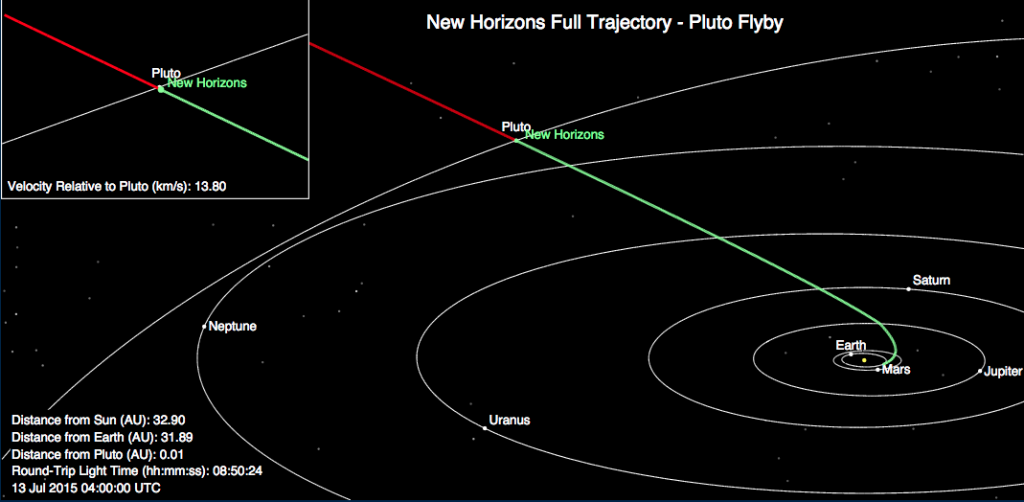
From NASA here.
There are two major reasons for this. First, the probe is looking at Pluto, and taking images and other measurements all the time, but when it does this the high gain antenna cannot be pointed at Earth to send back data. The second reason is that the data connection between NH and Earth is VERY S L O W! If you are old enough to remember dial-up internet in the early days of the web, then you can start to imagine the problem, but if you are thinking about download speeds like you used to get with a 56 kilobyte modem, you are still way off. Scientists at the NH Mission Control here in Maryland only dream of data speeds that fast. Try 1-2,000 BIT per second! Not kilobits, just bits, made up of a string of 8 0’s and 1s!
The LORRI imager on NH takes images at 1024×1024 pixels and they can be compressed down to about 2.5 megabits and should take about 42 mins. to transmit back to Earth. In one 8 hour period, several images can be transmitted, but remember that NH is not able to do any observing of Pluto while it sends back the picture. This is why, we are getting so few images right now. They’re all being stored on two 8 gig SD type cards, and it will take over a year to send all the data collected in the next few weeks back to Earth!
Why you may ask is the data rate that slow? Could they not have put a better transmitter on the spacecraft? In reality they have an amazing and very, very efficient transmitter. Two actually, that each put out about 12 watts of power. The spacecraft uses a hunk of Plutonium to generate electricity and it has around 200 watts to play with right now, and that is for all the electronics, the computer, imagers etc. Because the half life of Plutonium is around 88 years, the power has dropped somewhat in the ten long years that NH has been travelling across empty space. The electronics by the way keep New Horizon’s quite comfy up there and the spacecraft is insulated like a thermos bottle. If you were riding inside with all the electronics the temperature over the past ten years has been between 10 and 30C for almost the entire trip!
The problem with the data rate is that New Horizons in so incredibly far away. The signal from those 12 watt transmitters is so weak that only the big dishes at NASA’s Deep Space Network can lock onto it. Here is a summary of the DSN from NASA:
The DSN consists of three facilities spaced equidistant from each other – approximately 120 degrees apart in longitude – around the world. These sites are at Goldstone, near Barstow, California; near Madrid, Spain; and near Canberra, Australia. The strategic placement of these sites permits constant communication with spacecraft as our planet rotates – before a distant spacecraft sinks below the horizon at one DSN site, another site can pick up the signal and carry on communicating.
So if you think about it, any one station can only receive data from NH for around 8 hours before they have to transfer to another station, and the DSN is receiving data from other probes in deep space as well, on Mars, Around Jupiter, the Rosetta probe, and even the two Voyager spacecraft well into the Kuiper Belt. This means that communication time with New Horizon’s is golden and must be scheduled. It’s no good trying to talk to it while it’s taking images, so there is a whole lot of coordination involved. Also, the time it takes to send “are you there?” and receive a “yes I am!” is 9 hours right now! You can see what probes are being received by which DSN antenna right now here.
I will explain more about the slow data connection, but first let me give you a real idea of how far away Pluto is. If a Boeing 777 could fly straight up, then you would leave the part of the atmosphere with enough air to breathe in less than 90 seconds. You would pass the astronauts on the ISS in about 30 minutes. You would reach the Moon in a little under two weeks! You could fly over the Apollo landing sites and prove hundreds of YouTube videos claiming it was all a hoax wrong (they still won’t believe you), and then you could head for Pluto. You would finally get there-
675 years later.
Pluto is a long way away. New Horizons passed the Moon just 9 hours after launch, and it was the fastest moving object ever launched. It also got a big speed boost by flying near Jupiter where it took the image below, which I rank as among the most beautiful pictures from deep space ever taken.
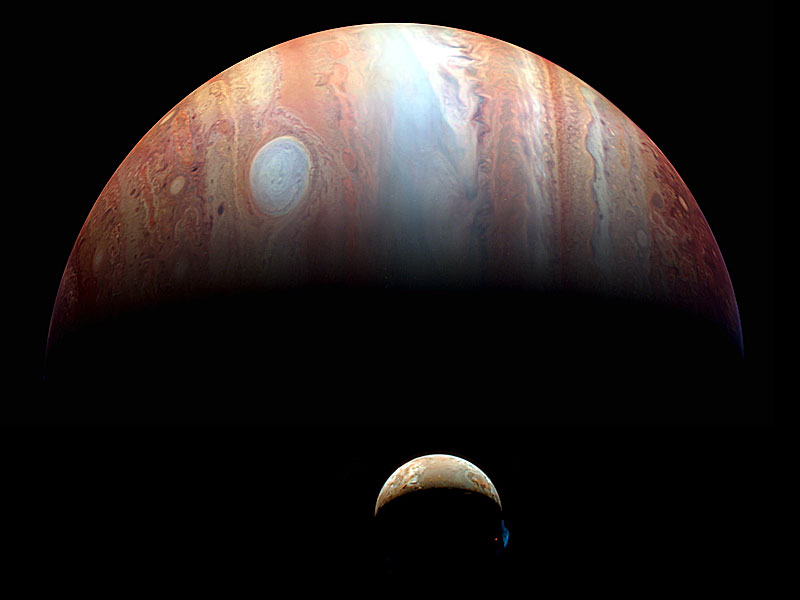
New Horizons has some amazing imagers onboard (it sent this as it passed Jupiter), and we will see Pluto like this soon.
So, the real reason for the slow data rate is the signal to noise ratio in the signal. As you drive farther away from a radio station in the car, you notice that you start hearing more “white” noise in the signal as it gets weaker. The same thing is happening with NH, except the signal is now so weak that the ratio of noise to signal is quite high. To receive data, the spacecraft must do the equivalent of talking to someone in a loud room. It speaks very slowly one word at a time. When the image above of Jupiter was transmitted the signal from NH was much stronger and it came in at the rate of an old computer modem from 1992. Now however, it is much, much, weaker and the data rate is very slow.
This may sound strange, but if you do a speed test between your cable modem and your PC at home, you will see the same thing as you reach the edge of your wifi range. Your speed drops dramatically. I am simplifying this greatly, but think of it this way, the receiver needs to listen longer through the noise to make sure it heard a one or a zero then it can go to the next bit if data.
Here is an excerpt from a NASA education module that explains it a bit more:
The signal from the spacecraft is very weak by the time it reaches Earth, since its energy is spread over a wider and wider area as it travels outward from the transmitter. The signal from the spacecraft is not only extremely faint, it is embedded in a background of electromagnetic “noise.” This noise is the incoherent background radiation produced by all other objects in the universe. It is always present in space, like static on your radio. Even while the New Horizons signal becomes fainter as the spacecraft gets farther away, the background noise remains at a roughly constant level. So the farther away the spacecraft, the more difficult it becomes to distinguish its signal from the noise. In addition, the communication equipment introduces its own noise.
With all of this noise, how can New Horizons communicate the data that it gathers on Pluto, its moons, and the Kuiper belt neighborhood back to us? The answer is that New Horizons must slow down its data transmission rate (the number of bits per second) as it gets further and further away. To be understood back here on Earth, New Horizons must “talk” more slowly as its signal becomes weaker.
This may seem peculiar. Why would it help to decrease the data transmission rate? In short, the answer is: for better signal detection. To understand, let‟s think of the data as a sequence of bits, or ones and zeros, that correspond to “signal on” and “signal off”. The job of the radio receiver on Earth is to distinguish these two states of the signal from one another. That is, the receiver must decode the sequence of bits and pass the information along to a recording device.
The receiver does this by steadily making measurements—many each second—and averaging the results. But each time, of course, it is measuring not the signal alone, but the signal plus the noise. The averaging process preserves the signal (suppose for example it is “on” during the measurements) but it tends to reduce the effect of the noise. That‟s because a measurement of the noise is as likely to give a positive result as it is to give a negative one, and so the noise measurements can cancel each other out in the average. That cancellation is more and more effective the longer the averaging process goes on.
How much cancellation is needed? Basically, the averaging has to continue until the average of the noise is so low that “one” and “zero” can be distinguished from one another in the signal. The signal-to-noise ratio (SNR) compares the power level of the desired signal with that of the noise. A larger SNR indicates a stronger signal—that is, one that is easier to distinguish from the background. Therefore, the smaller the SNR, the more averaging that is needed. But increasing the averaging time means that the “ones” or “zeros” from the signal have to persist for a longer time too, or else they will cancel each other out as well. The result is that a long averaging time, which is needed to reduce the effect of the noise, requires a decreased data transmission rate. This can be likened to talking very slowly when trying to carry on a conversation in a crowded, noisy room.
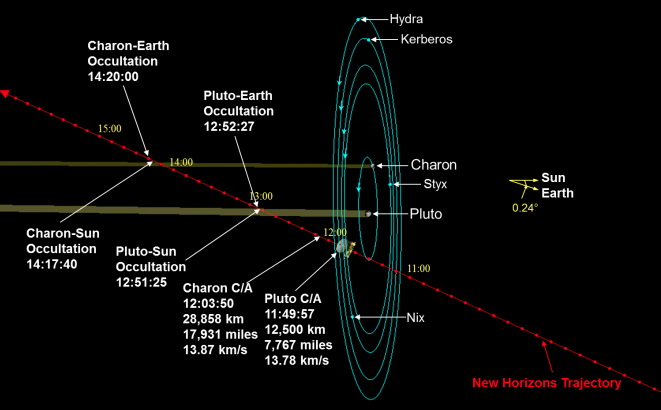
Just after New Horizons passes Pluto the Earth will go behind the dwarf planet. As Earth sets behind Pluto, a powerful signal will be transmitted to the probe and recorded on the spacecraft. This will allow the measurement of temperatures and pressures in the atmosphere of Pluto. This is already being done here on Earth and the data is improving weather forecasts here on Earth!
3. So, now you know why, but the question now is when WILL we start to see images??.
Here’s some good news. NASA has programmed NH to send back some “fail safe” images late Monday evening as it nears its closest approach.This is just in case something happens to the probe as it flies through the Pluto system (You can see the schedule here). So we should wake up on Tuesday as NH flies by, and have some tantalising images to gape over! It will take until early winter (or perhaps longer) to download most of the fly-by data, all while New Horizons flies deeper into the icy Kuiper Belt, and it’s power and signal get weaker. You can see what it would look like if you were sitting on the NH (and also how busy it will be) with this neat animation.
Will New Horizons eventually pass Voyager One?
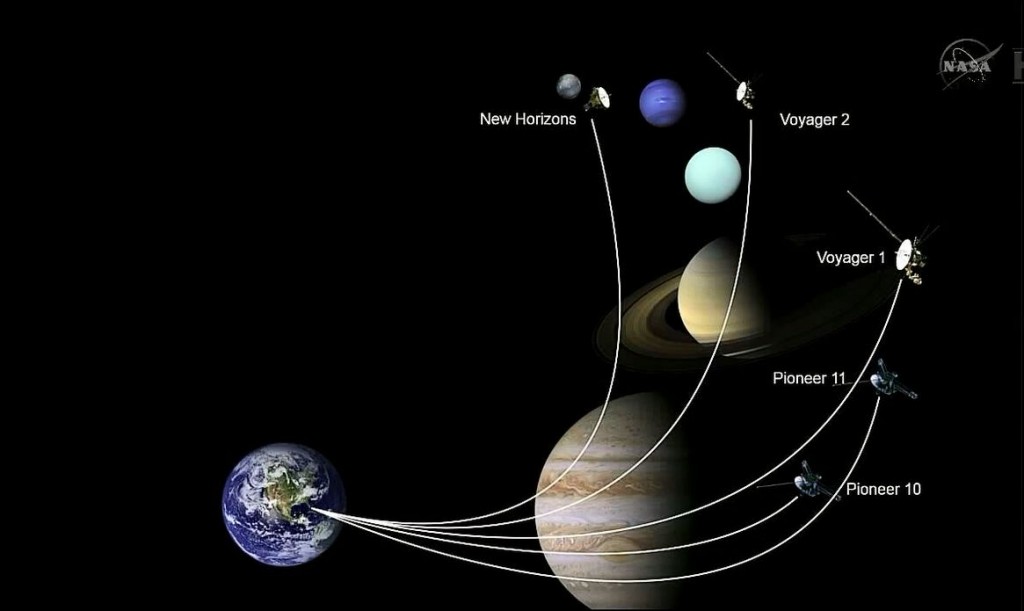 Easy answer, and it was among the first questions I asked Mike Buckley of New Horizons when we chatted at the AGU meeting in San Francisco last December. It will not. Voyager is moving away from the Sun faster than New Horizons is because it got a gravity sling-shot from Jupiter, Saturn, Uranus, and Neptune. NH only got one, from Jupiter. Voyager was actually launched in 1977 to take advantage of the fact that the planets would line up to make such a fast trip to the outer planets possible. The track needed to do it also meant that the Voyager probe would not pass even near Pluto.
Easy answer, and it was among the first questions I asked Mike Buckley of New Horizons when we chatted at the AGU meeting in San Francisco last December. It will not. Voyager is moving away from the Sun faster than New Horizons is because it got a gravity sling-shot from Jupiter, Saturn, Uranus, and Neptune. NH only got one, from Jupiter. Voyager was actually launched in 1977 to take advantage of the fact that the planets would line up to make such a fast trip to the outer planets possible. The track needed to do it also meant that the Voyager probe would not pass even near Pluto.


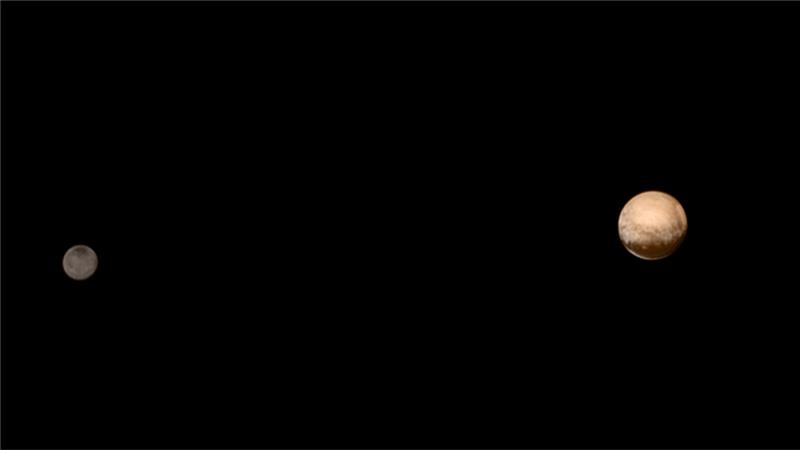
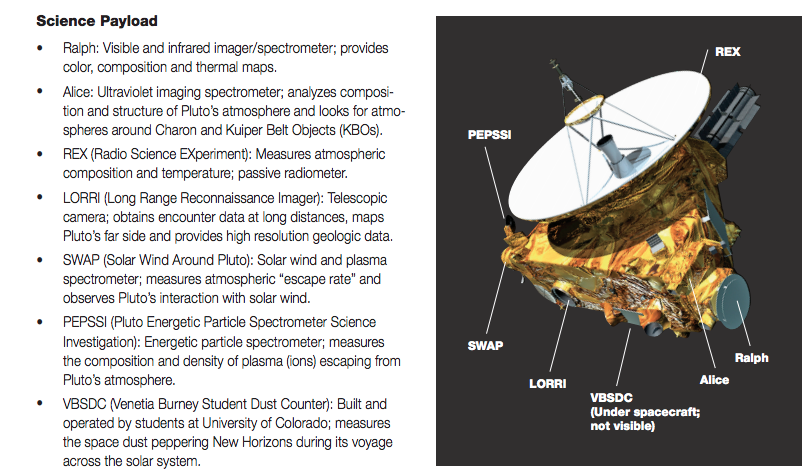

 Dan Satterfield has worked as an on air meteorologist for 32 years in Oklahoma, Florida and Alabama. Forecasting weather is Dan's job, but all of Earth Science is his passion. This journal is where Dan writes about things he has too little time for on air. Dan blogs about peer-reviewed Earth science for Junior High level audiences and up.
Dan Satterfield has worked as an on air meteorologist for 32 years in Oklahoma, Florida and Alabama. Forecasting weather is Dan's job, but all of Earth Science is his passion. This journal is where Dan writes about things he has too little time for on air. Dan blogs about peer-reviewed Earth science for Junior High level audiences and up.